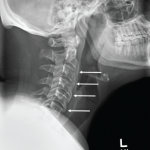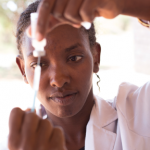Paleoepidemiology provides the opportunity to test current clinical perspectives of disease and the accuracy of our clinical diagnoses.12 It can help address whether disease categories are pure or whether they have been mistakenly coalesced into a single diagnosis.
A prime example of interest to rheumatologists is RA. Some of the confusion arises from the use of the term “RA” as a general appellation for peripheral joint inflammatory arthritis.4,12 This has been further confused by the term “rheumatoid spondylitis,” an old name for ankylosing spondylitis.13,14
Examination of the archeological record of North America reveals an intriguing window to the character of RA. The Western portions of the Tennessee and Green Rivers witnessed a disease manifest by a polyarticular erosive arthritis.15 Multiple populations with the disease shared common characteristics. Erosions were all marginally distributed and were not accompanied by reactive new bone or periosteal reaction, nor by joint fusion. Sacroiliac joints and vertebrae (C1–C2 excepted) were unaffected. Radiologic examination revealed periarticular osteopenia. Subchondral joint erosion and fusion of peripheral joints were not part of the disease. Thus, we seem to have multiple populations with only one disease present. This allowed an unfettered perspective of RA.
Examination of the zoologic and paleontologic record is even more instructive. While some researchers have observed isolated occurrences of “RA” in swine and dogs, examination of those cases reveals subchondral erosions, not only of peripheral joints, but also axial joint fusion, clearly a different disease than human RA.4,16-18 In fact, this disease is indistinguishable from human forms of spondylarthropathy. This condition has proven to be a pan-mammalian disorder, traceable as far back as the dinosaurs and beyond.19,20
Similarly, paleopathology has allowed clarification of the character of other joint diseases. Calcium pyrophosphate deposition disease (CPPD) has been recognized by the radiographic findings of chondrocalcinosis and radiocarpal joint space narrowing.4,5 The latter characterizes wrist involvement, but is not amenable to study in unfleshed skeletons. However, joint space narrowing, perhaps sufficient for classification, was noted to be associated with clinical radiocarpal joint indentation that is recognizable in the skeletal record.21,22 Examination of skeletons with such radiocarpal indentation often revealed modification of the metacarpal phalangeal joints.1,4,21,22 The joint surfaces were incomplete and lacked the erosions of RA or the tophaceous lesions of gout. I have chosen the term “crumbled erosion” to describe this appearance.1,4,21 This observation not only provided a facile differential characteristic of erosions, but also permitted new insights into what had previously been called erosive osteoarthritis.23 Distal and proximal interphalangeal joints afflicted with this disease had the same epidemiologic features and radiologic changes characteristic of CPPD.21


